

A ready-made atomic structure worksheet can be a lifesaver if you have a lesson coming up that you need to prepare for. Searching for high-quality resources can be time-consuming, so we have saved you time and rounded up the best ones in this article, allowing you to relax with your feet up, or catch up on your marking!
One reason that a ready-made atomic structure worksheet can be so valuable, is the amount of time it can take to make. Most good atomic structure worksheets will have diagrams of atoms included, and these can be a pain to make up in a word processing document (I speak from experience!) Most of the worksheets below focus on knowledge of protons, neutrons, and electrons, though some do include isotopes and ions. The main feature of a worksheet should be to make sure the students have the important facts written down in front of them, allowing you to build an engaging lesson around it.
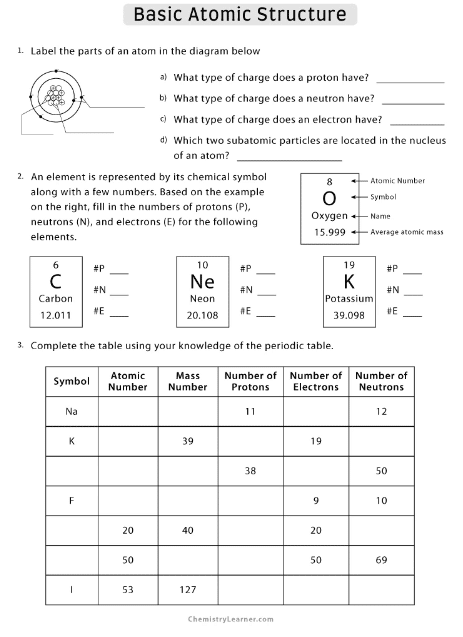
This huge pack of atomic structure worksheets will provide resources for all stages of teaching this topic. Including fill-in-the-blank paragraphs and questions working out the number of protons, neutrons, and electrons, these worksheets can be used to introduce new concepts and consolidate ones you have already introduced. Most of the worksheets are suitable for Grade 7 upward, though some are a bit more advanced.
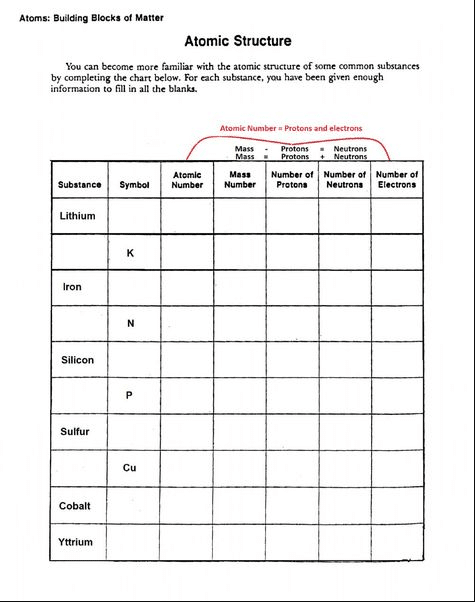
This simple worksheet requires students to work out the numbers of protons, neutrons, and electrons as well as the atomic number and mass number, using only the element name or symbol. If your class has just started the topic, you could make it slightly easier by giving them the atomic or mass number to start them off, or simply leave them to find out from their periodic table.
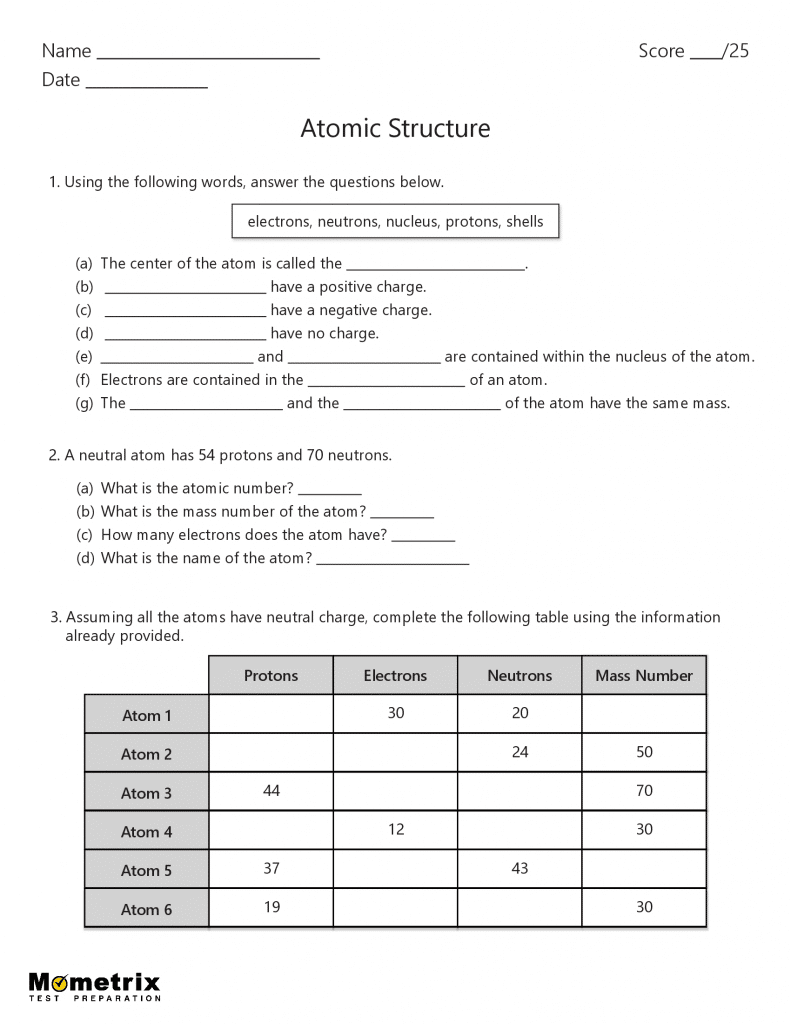
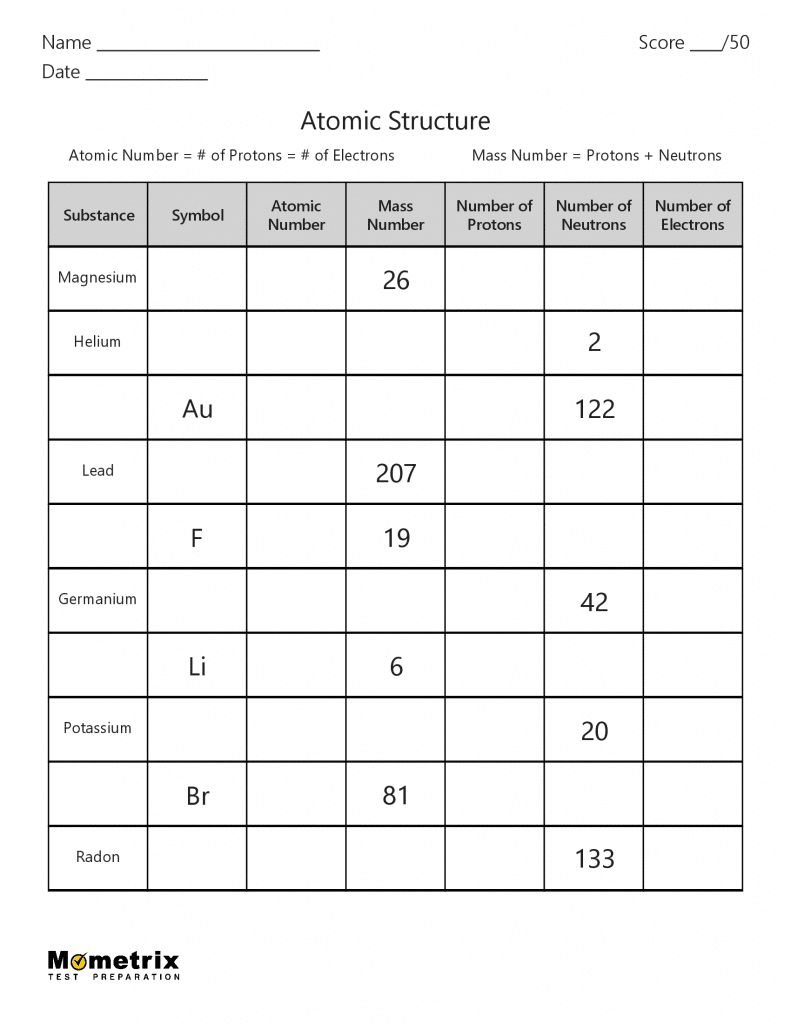
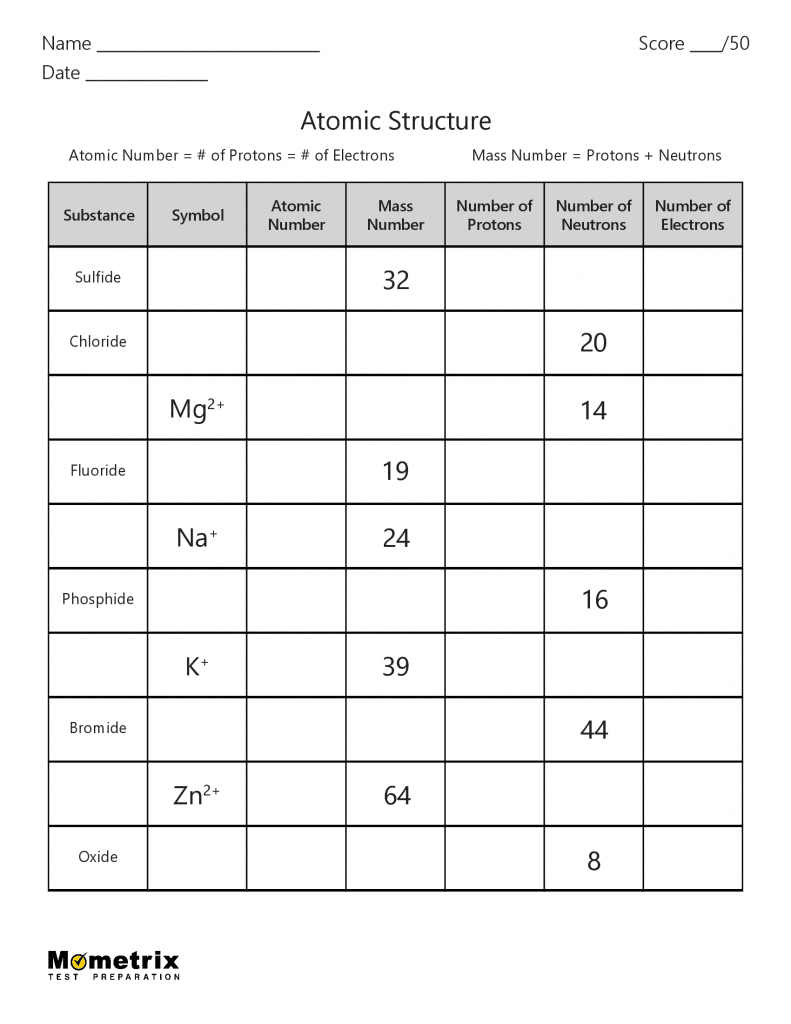
This set of 3 worksheets is ideal for revision at the end of the topic. It contains questions to test their knowledge of protons, neutrons, and electrons, as well as atomic number and mass number. It comes with an answer key to allow for peer marking.
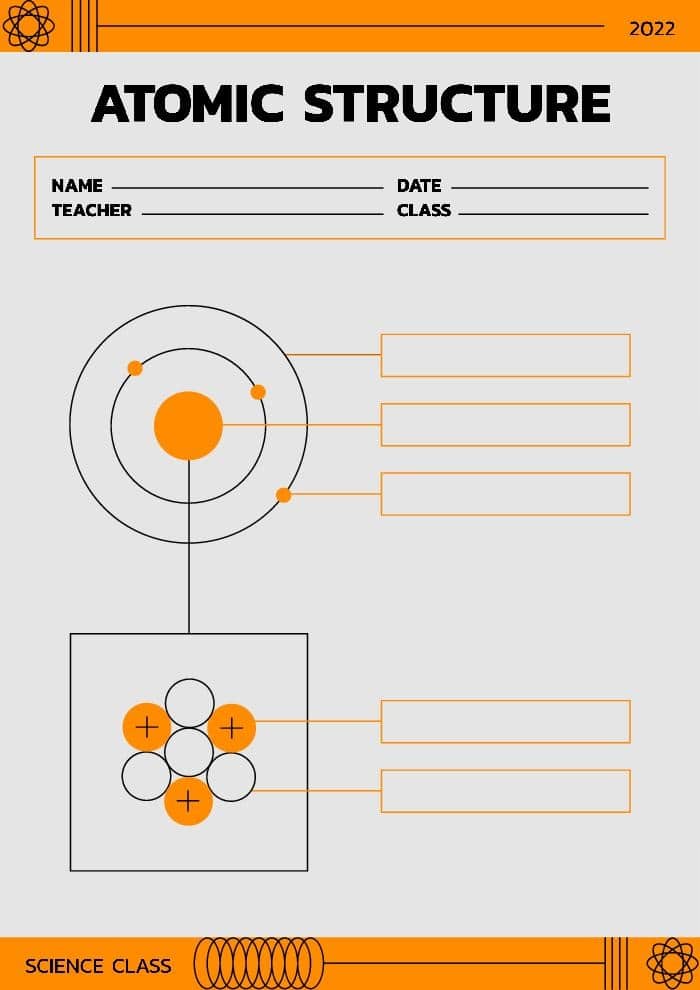
This simple worksheet is the perfect way to introduce atomic structure to your class, providing a blank atom for them to fill in and label. You can edit the worksheet before printing, meaning you can have different atoms to use as examples as you progress through the course.
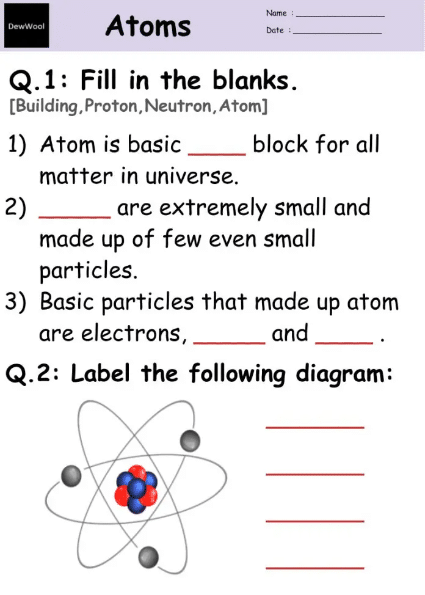
This set of 3 worksheets contains a variety of different question styles, including fill-in-the-blanks and yes/no questions. A helpful resource as a homework exercise or to consolidate the lesson. Suitable for Grade 6 upward.
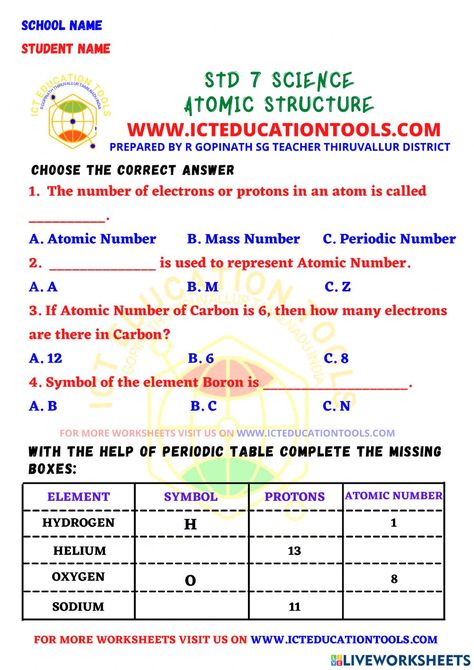
A simple worksheet that contains both fill-in-the-blanks sections and tables to fill in with numbers of protons, neutrons, and electrons. The interactive nature means it can be used as a whole-class activity with a smart board, or individual devices for the students if available.
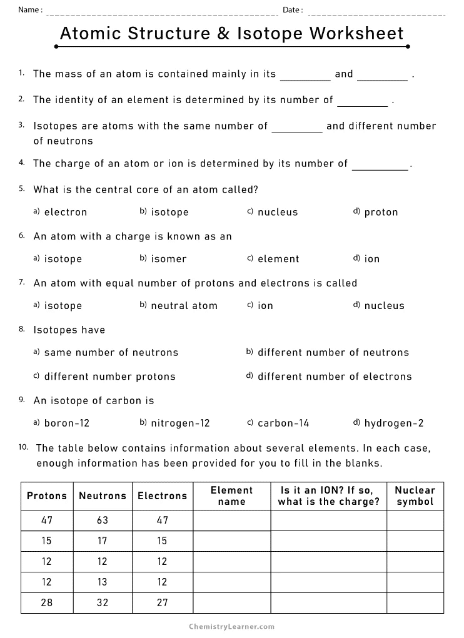
This worksheet covers both the basics of atomic structure and has questions about isotopes as well, so would be a useful resource once you are further on in the topic. It also mentions simple ions.

This worksheet tests the students’ knowledge of the structure of the atom by asking them to label the atom diagram. It is an interactive worksheet so can be either printed as a PDF or used with a smart board.

This worksheet will test your students’ knowledge of the structure of isotopes. Each question contains a table with two isotopes of the same element, and pupils must work out the number of protons, neutrons, and electrons in each one. Ideal as a homework exercise to consolidate the lesson.
To keep your students engaged throughout the topic, these interactive resources should be a hit.
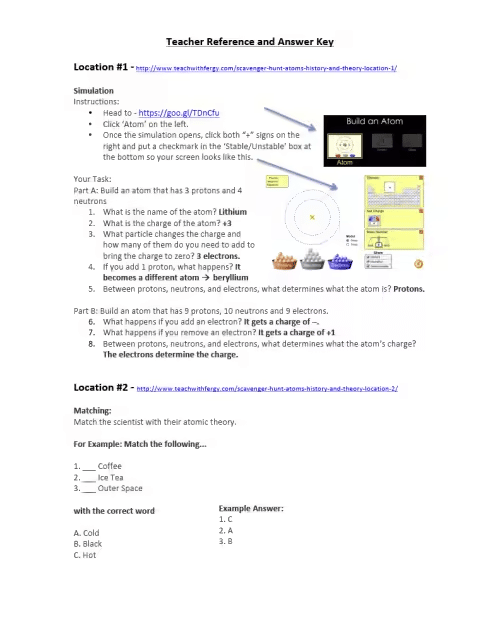
Your class will love this interactive scavenger hunt related to atomic structure. Pupils use their phones or other devices to work out clues and complete the activity. They will need at least 1 device per 3 students. This activity covers protons, neutrons, and electrons, as well as scientists involved in the discoveries, and some history of the atom.
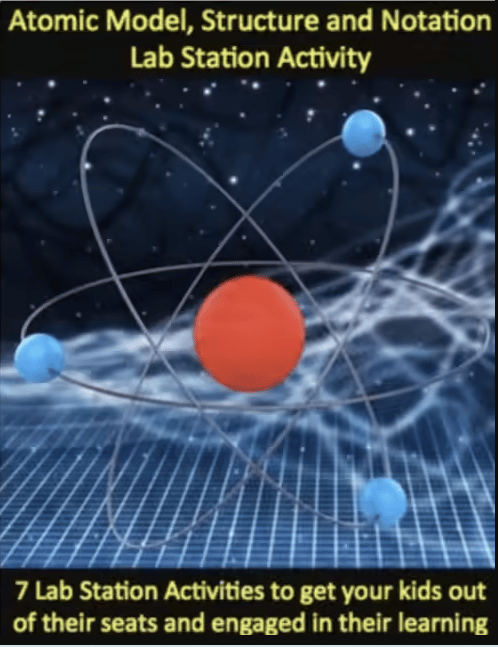
Create a buzz in your classroom by getting the kids out of their seats with this atomic structure lab station activity. Each station will test the students’ knowledge while also developing their problem-solving skills and encouraging teamwork. Concepts covered include the model of the atom, atomic number, atomic mass, and element symbols.
When looking for teaching-related worksheets online, a decision has to be made – free or paid. The instinct is often to choose free resources, which are often not of the quality you are looking for. Although good-quality free worksheets do exist, they are rare. The problem with paying for teaching resources is that they are often only used once per session, and paying for each individual download can seem like a waste if you won’t have the chance to use it again for 12 months.
The answer is simple – Teach SImple! We have 1000s of high-quality resources, written by qualified teachers, for 1 low monthly fee. Once you are a Teach Simple subscriber, you can download as many materials as you want from our website – with no limits. If a lesson isn’t quite what you hoped it was going to be, you haven’t lost anything. Simply download another and off you go! We have worksheets, flashcards, interactive activities and so much more.
Try our no-obligation free 30-day trial to get access to all of our resources today – you can cancel at any time.
Atomic theory can be a difficult topic to introduce to your class, so this collection of atomic structure worksheets should make it easier for you to plan a lesson that is both engaging and informative.